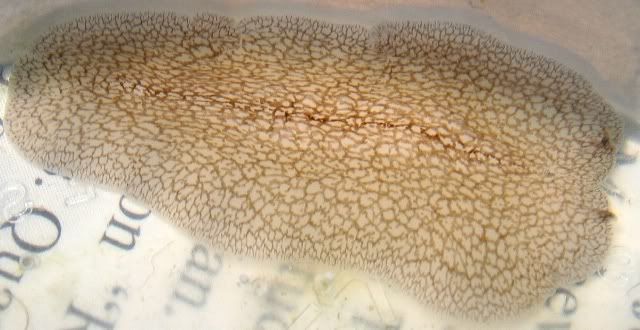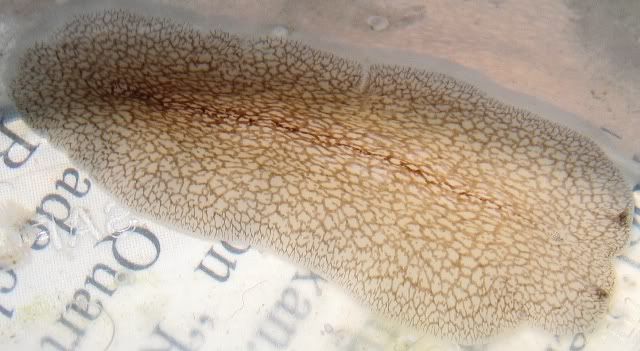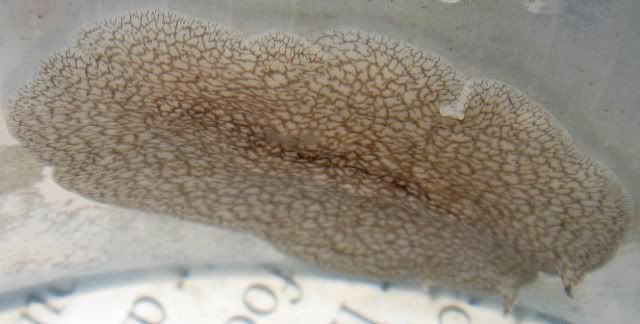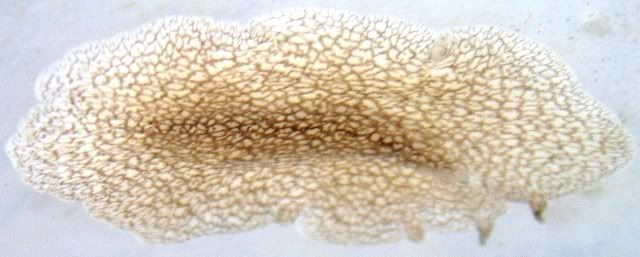

|
|
|
|
|
#1
|
|||
|
|||
|
ID...is this a polyclad flatworm?
Dr Ron,
Hello there. I saw this guy (or its brother/sister) six months ago in my tank and my pictures were too fuzzy for you. I managed to capture it last night, is this a polyclad flatworm?     I didn't find much information on them online, I found this: http://www.reefkeeping.com/issues/2003-08/rs/index.php http://www.rzuser.uni-heidelberg.de/~bu6/flatintr.htm It seems their diet can range from algae to clams. Any way of telling what this one eats? Also, I had to do a flatworm exit treatment on my main tank a couple of weeks ago, it killed off all the small red flatworms, why didn't it take this guy out? Thanks! Brian
__________________
Currently redesigning my 90 gallon tank system to support coral and invertebrate breeding. Click on my red house to see the thread with the progress. |
|
#2
|
|||
|
|||
|
It sure looks like a polyclad flatworm to me.
__________________
just give me what I want and no one gets hurt |
|
#3
|
|||
|
|||
|
Yes. Worms with this pattern are pretty common in reef tanks and they seem to eat snails. The FWE didn't kill this guy because he's only very distantly related to the little red flatworms.
__________________
Lanikai, kahakai nani, aloha no au ia 'oe. A hui hou kakou. |
|
#4
|
|||
|
|||
|
I had the same thing in my tank a week or two ago. When I asked Dr. Ron about potentially using FWE to kill it he told me that the snail-eating polyclad worm was no more closely related to those little red flatworms than I was. At first I thought Dr. Ron was calling me a flatworm

|
|
#5
|
|||
|
|||
|
Quote:
 Brian
__________________
Currently redesigning my 90 gallon tank system to support coral and invertebrate breeding. Click on my red house to see the thread with the progress. |
|
#6
|
|||
|
|||
|
Hi Brian,
Yup, as Mike has pointed out it is a polyclad flatworm. To clear up some confusion... the old taxonomic grouping called the "Phylum Platyhelminthes" is no longer considered to be a valid group. Examination of the fine structure of the animals in it, coupled with analyses of the genetic material, indicates that it was a "false" grouping, one made on gross structural appearance. Unfortunately, not all things that look alike are related (sorta like sharks, porpoises, and tuna all have the same general shape, but are only very distantly related). The so-called "red planaria" not only are not planarians, but now are recognized as being members of an entirely separate group, given the name the Acoela or Acoelomorpha. Planarians - and polyclads such as the animal illustrated in the first post of this thread - are in the group that used to be called the "Class Turbellaria" of the Phylum Platyhelminthes. Calling them "Turbellarians" (a group now including actual planarians, polyclads, and several other meaty free-living (mostly) flatworms) is probably the best way to go. I suspect the nomenclature of the group will shake out over the next few years as more work is done on the internal inter-relationships within it. |
|
#7
|
|||
|
|||
|
Quote:

__________________
Life is too short to learn everything from experience. "And ye shall know the Truth and the Truth shall set you free." |
|
|